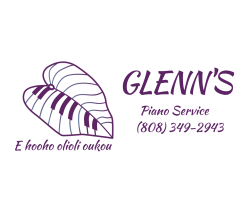It seems like a deal. The outside of the piano looks great. You can’t wait to get it home and begin playing. Except when you do, all the notes won’t play and it sounds horrible.
It’s a scenario members of the Piano Technicians Guild (PTG) (www.ptg.org) are seeing more frequently. The reality is that “free” or “cheap” pianos can be incredibly expensive if the condition of the instrument will require complete rebuilding in order to be a playable instrument.
As part of their education mission, the PTG has extensive resources for piano consumers on their website including tips on buying used pianos. The single most important tip is to call a Registered Piano Technician (RPT) to look at a piano before you buy it. An investment of a service call before a purchase can keep you from buying and paying to moving a piano that won’t be playable much less an instrument you can be proud to own.
In the meantime, here are some tips to keep in mind
- Look for notes that sound terribly out of tune when played by themselves. When a piano pinblock goes bad it can’t hold the tuning pins tightly and a tuning pin will slip. A bad pinblock may very well be the end of that piano.
- Another serious problem is the presence of strange rattles or buzzes. The soundboard, which is the large wooden board you can see from the back of an upright piano or from underneath a grand, can get cracks in it. This can allow the soundboard to sound like a speaker distorting when it is played too loudly.
- Look at the hammers (the part that strikes the string) for deep grooves in the felt. Layers of felt can be removed to restore the rounded shape to the hammer but eventually there in not enough felt left above the wooden molding to get a good tone. Hammer replacement is expensive.
- There’s also good news. Despite the drawbacks and hidden costs of used pianos, you can still find a great instrument as long as you do your homework and let an RPT guide you through the purchase.
For more information contact Willem Blees, RPT, 808-349-2943
